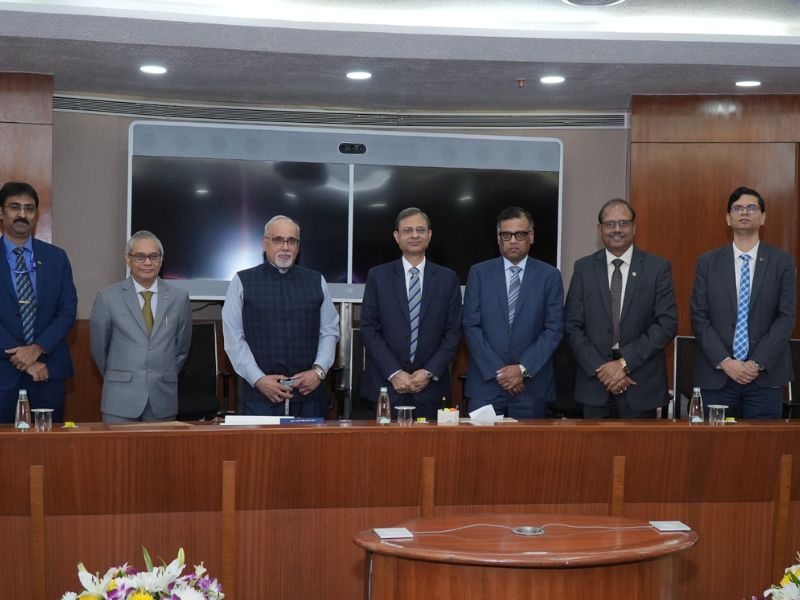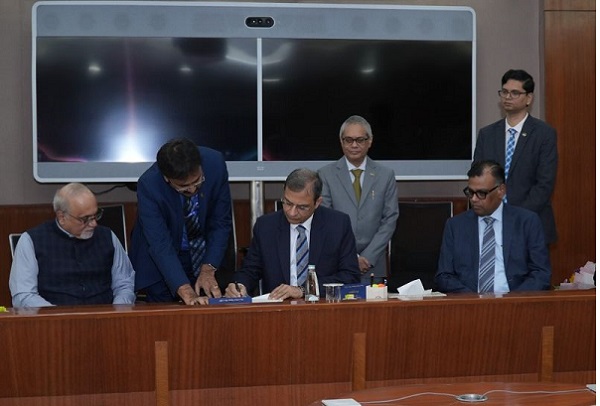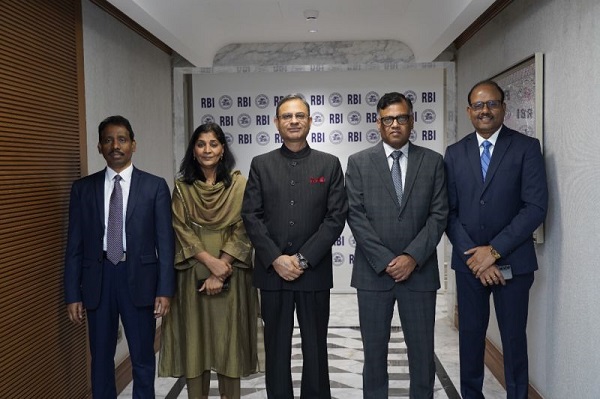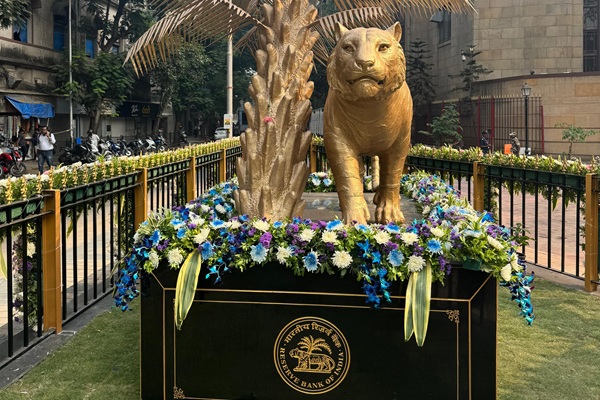.png)
June 4, 2025 at 9:43 AM IST
The Monetary Policy Committee of the Reserve Bank of India is expected to cut the policy repo rate by 25 basis points on June 6, marking the third consecutive reduction in 2025. With headline inflation undershooting forecasts and growth indicators showing uneven traction, the central bank is likely to act pre-emptively. Polls conducted by leading financial publications and agencies point to a consensus expectation of a rate cut this Friday.
The key reason for the expectation is the favourable inflation backdrop and the need to support growth in view of the rising external uncertainty. Some voices in the policy and research community, including SBI Research, have gone further to advocate a larger 50 bps cut, arguing that a bolder move may be necessary to stimulate the credit cycle and sustain growth momentum.
Inflation has softened considerably, with April CPI falling to a near six-year low of 3.16% and May’s reading expected to be below 3%. These figures are materially lower than the RBI’s forecast of 3.6% for the April–June quarter, suggesting room for easing. While inflation has moderated, growth dynamics remain mixed. March Quarter GDP growth surprised on the higher side at 7.4%, but a significant portion of the increase was due to net indirect taxes rather than real output. Gross value added, which many consider a better metric of economic activity, was at 6.8%. For 2024-2025, GDP growth was 6.5%, in line with the official estimate.
Despite some resilience in rural sectors, urban consumption has moderated, partly due to weak wage growth and lower savings. The global context is equally uncertain, with volatile US trade policy and restrained global growth adding downside risks. In this setting, the MPC is likely to proceed with a rate cut but avoid signalling a preset path for future actions. The stance is expected to remain accommodative, maintaining flexibility for rate cuts or pauses in subsequent meetings depending on evolving macroeconomic data.
A section of the market also believes the RBI could widen its Liquidity Adjustment Facility corridor asymmetrically, by cutting the Standing Deposit Facility rate by 50 bps. This will, in effect, be similar to a 50-bps cut in the policy rate, as the overnight rate will tend to align with the lower end of the corridor, given the surplus liquidity in the system.
Liquidity
System liquidity has improved notably, supported by RBI’s open market operations and the ₹2.7 trillion surplus transfer to the government. Surplus liquidity stood at ₹1.7 trillion in May and is expected to rise further as government spending increases. Much of the liquidity support has been delivered via open market operations, with approximately ₹5.2 trillion infused so far in 2025.
Banking system conditions have also reflected these changes. Weighted average call rates are 22 bps below the repo rate, and rates on new deposits have fallen by 35 bps since February 2025, indicating the ongoing transmission of past 50 bps of rate cuts. The RBI appears to be allowing short-term rates to drift closer to the Standing Deposit Facility rate, enhancing the effectiveness of its policy signals.
Inflation-Growth Forecasts
With headline inflation trending lower and southwest monsoon expected to be above normal, RBI may revise its inflation forecast downward for 2025-2026. Several institutions have revised down forecasts below the RBI’s forecast of 4.0% with QuantEco expecting it at 3.8% and IDFC FIRST Bank at 3.5%. The easing trend is driven by moderation in food inflation, lower global oil prices, and subdued core inflation. However, volatility in vegetable prices and the impact of recent unseasonal rains could reintroduce inflationary pressures.
The RBI is expected to maintain its growth projection for 2025-2026 projection at 6.5%. Government capital expenditure remains the main driver, as private investment stays hesitant due to global uncertainties. A revival in rural demand, aided by strong rabi output and favourable monsoon forecasts, provides support. Urban consumption could recover gradually, helped by falling inflation, fiscal measures, and lagged effects of past rate cuts.
Trade War and Global Uncertainty
Global trade tensions, particularly stemming from the United States’ tariff actions, present a material risk to the domestic economic outlook. A series of on-again, off-again tariff decisions by the US government have created a volatile external environment. While some temporary truces have been reached, the situation remains fluid. India’s GDP growth is increasingly correlated with global trends, and disruptions in trade flows, investment decisions, and financial markets are expected to weigh on domestic growth prospects.
Many institutions have cut their forecast on GDP growth, mainly on account of the global uncertainties. QuantEco said if the global growth outlook deteriorates further, particularly in the absence of a durable trade agreement with the US, it could shave 20 to 30 bps off India’s 2025-2026 GDP. This uncertainty may also restrict the scope for aggressive easing by the US Federal Reserve, with US rate cuts currently priced at only 50 bps for 2025.
The RBI’s expected rate cut in June is not just a response to domestic disinflation, but as a pre-emptive buffer against worsening global demand. Analysts remain divided on the terminal repo rate for this easing cycle. While some see a pause at 5.50%, others project it to go as low as 5.00–5.25%, contingent on the depth of the global downturn and the trajectory of domestic inflation.





